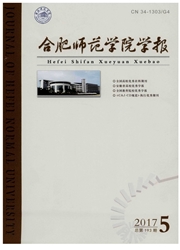

 中文摘要:
中文摘要:
分析遗存的明代清水江文书发现,苗、侗民族聚居的清水江流域明代地土占有形态由原来主要的土司占有领地转化成苗田、屯田和民田三种类型构成,分别对应着国家、土司和自耕农占有,是国家在少数民族内地边疆地区推行屯田所促成的一种特别的土地分配制度。同时,屯田不断地瓦解着原有土司占有形态,土地买卖又消解着屯田制度与土司领地,形成屯田、土司领地的民田化趋势。伴随民田化趋势促成了该流域内的地权变化,转变而来的世俗地主与自耕农阶层最后成为向国家承担赋役的编户。屯民来源、缴纳赋税方式也是苗侗社会经济生活主要内容。
 英文摘要:
英文摘要:
It has been discovered from the inherited Qingshuijiang Instruments from the Ming Dynasty that the land ownership in the Qingshuijiang Basin inhabited by the Miao and Dong had been transformed from the customary way of mainly being owned by chieftain manor into three different forms: Miao-field, reclaimed-field and folk-field,which were owned respectively by chieftains, feudal state and land-holding peasants. This special land allocation system was brought about by the land reclamation system that feudal government carried out in inland minority regions. The land reclamation system disintegrated original chieftain manor, while the land dealing counteracted land-reclaimed system and chieftain manor, which converted reclaimed land and chieftain manor in-to folk-fields. With the change of land ownership, secular landlords and owner-peasants came into existence, who became feudal state’ s property owners written into household registration and took on taxes. The origin of the land-reclaimed people and the way paying taxes had become the main social and economic contents of the Miao and Dong people.
 同期刊论文项目
同期刊论文项目
 同项目期刊论文
同项目期刊论文
 期刊信息
期刊信息
